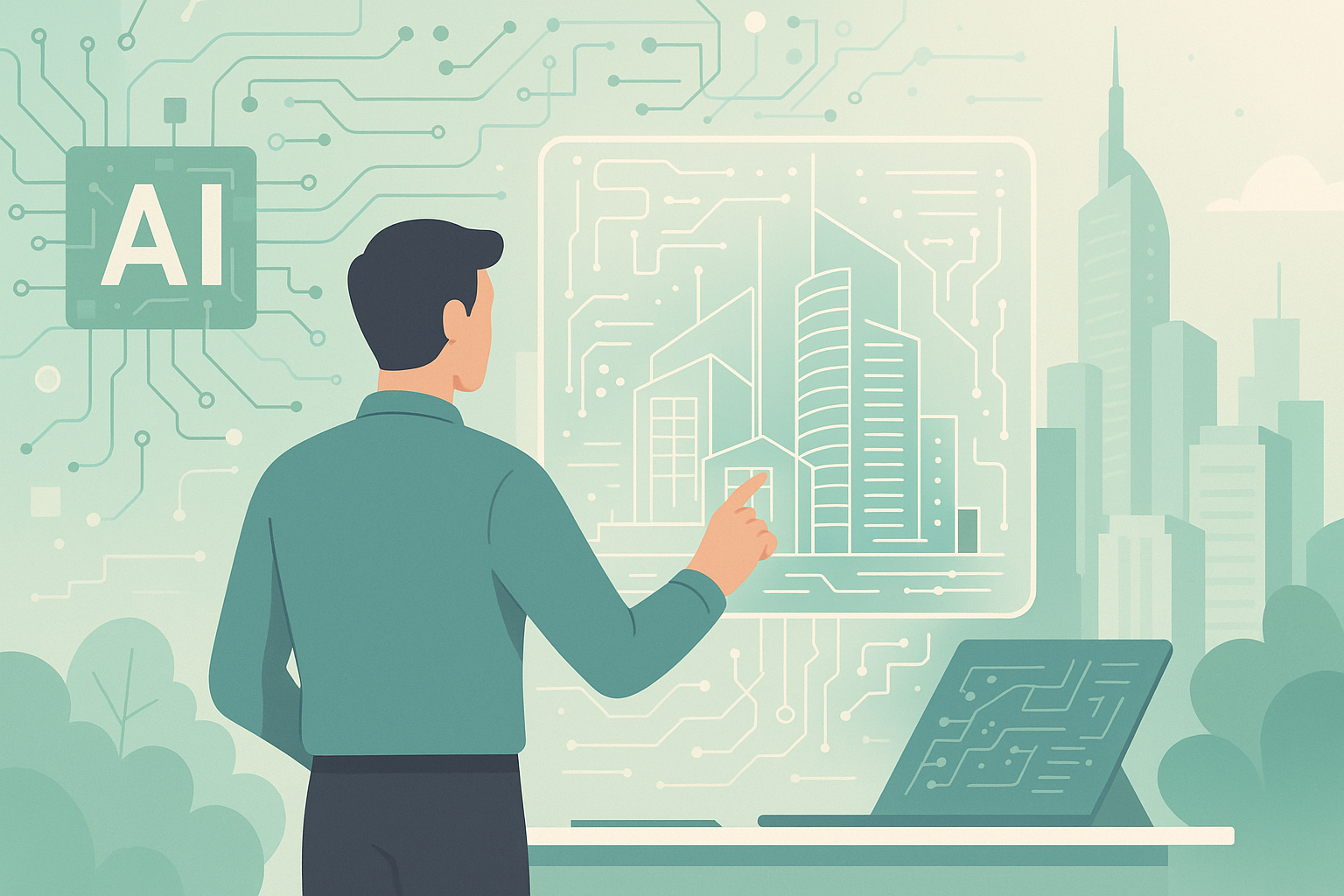There’s something fascinating about the idea that an algorithm could help design the spaces where we live, work, and gather. Architecture—long a synthesis of aesthetics, engineering, and culture—is now welcoming a new partner: artificial intelligence. Not as a replacement, but as a collaborator. A partner with no lived experience, yet capable of processing millions of data points in seconds. One that doesn’t dream, but can suggest new forms, unexpected connections, and solutions we might never imagine.
In the heart of future cities, AI is already making an impact. Algorithms are being used to analyze pedestrian traffic, optimize mobility flows, predict energy consumption, and even detect climate risk zones. These tools are essential for urban planners working on smart cities that aim to be both sustainable and human-centered. As we explored in the article “AI and the Future of Mobility", technology can help make cities not only smarter but also more responsive and inclusive.
But the change doesn’t stop at urban planning. In architectural design software, AI is being integrated to automatically generate shapes and volumes through generative and parametric algorithms. The designer no longer starts with a hand-drawn line, but with a set of constraints and objectives. AI processes hundreds of variants and proposes the most efficient ones based on defined criteria: solar exposure, natural ventilation, sustainable materials.
It’s a reversal of the traditional approach: instead of designing a form and then adapting it to reality, we begin with real-world data to let the most fitting form emerge. This doesn’t mean creativity is lost—it’s simply shifting. The architect no longer draws every line, but instead guides the process, selects, adjusts, interprets. AI becomes an extension of design thinking, not a limitation.
Some studios are already setting benchmarks. Zaha Hadid Architects, for instance, uses machine learning systems to generate fluid forms inspired by natural movement. In Copenhagen, the BIG studio has experimented with algorithms to reduce the ecological footprint of residential complexes. And at MIT, researchers are exploring how AI can analyze residents' needs in real time and adapt architectural spaces accordingly.
(Source: https://www.dezeen.com/2023/11/17/ai-architecture-parametric-design-mit)
Still, it’s not all bright and shiny. Automation carries the risk of flattening the creative gesture, turning architecture into a sum of optimizations and efficiencies. There’s a danger that we lose surprise, deviation, the fruitful mistake. And then there’s the matter of uniqueness—if the same algorithms are used everywhere, we may end up with cities and buildings that all look alike, standardized and predictable.
That’s why the human role remains essential. AI can guide, but we still need critical, curious minds capable of pushing beyond the “correct” solution. Architects, planners, and designers must learn to converse with these tools—not submit to them. To use data, but also translate it into experiences, emotions, and visions.
The future of design is shared ground. A place where machines don’t replace but amplify. Where technical expertise meets human sensitivity. And where architecture, even when shaped with algorithmic help, remains a profoundly human act.
📚 Do you want to learn Artificial Intelligence?
Discover our fundamental articles, ideal for starting or orient themselves in the world of AI:
- What is Artificial Intelligence (and what isn't, really)
- Ethics of Artificial Intelligence: why it concerns us all
- 5 Tools of Artificial Intelligence that you can use immediately
📬 Get the best every Friday
Visit the page Subscribe to our newsletter and choose the version you prefer (English or Italian).
